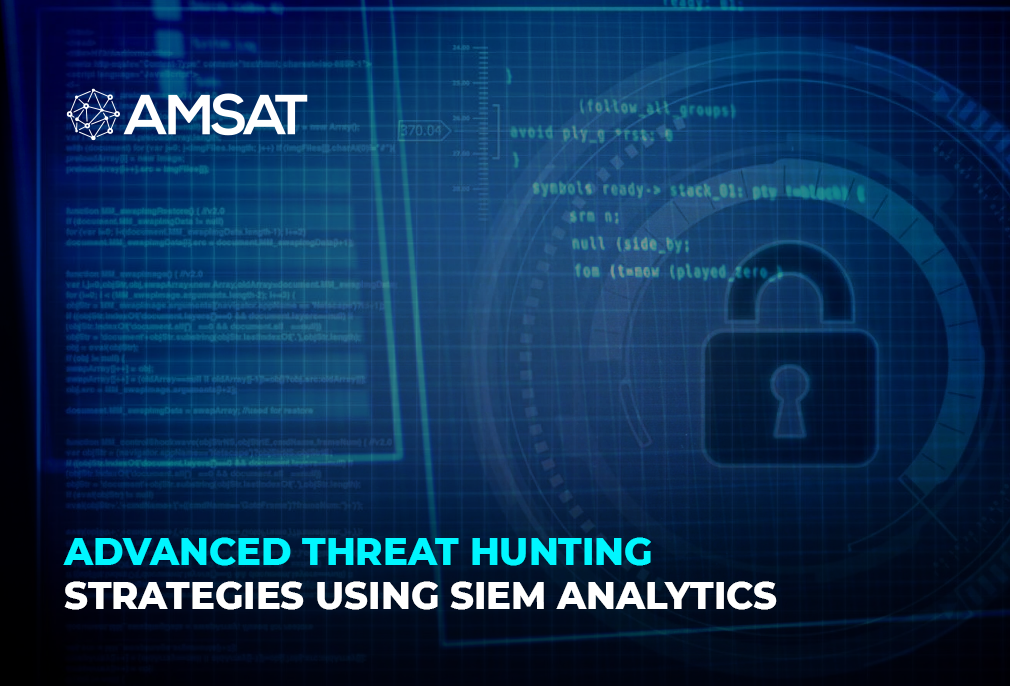Latest Blogs

By AMSAT Sep 25,2023
Using AI to Improve Your SIEM's Detection and Response Capabilities
For organizations of all sizes, security information and event management (SIEM) systems are key to detecting and responding to security threats. SIEM systems collect and evaluate logs from a variety of sources, such as servers, networks, and applications, to identify suspicious activity.
SIEM AI is an advanced cybersecurity solution that helps protect sensitive data from potential threats. And artificial intelligence (AI) is increasingly being used to improve the detection and response capabilities of SIEM systems. AI can help SIEM systems to:
- Identify more sophisticated threats: AI can be used to create more complex rules and algorithms that can identify risks that would be hard or impossible to find using conventional techniques. AI can be used, for instance, to identify dangerous patterns of behavior, including unexpected login attempts or network activity.
- Minimize false positives: AI may be able to reduce the quantity of false positives that SIEM systems produce. When a lawful activity is wrongly labelled as suspicious by the SIEM system, false positive warnings are sent out. By analyzing more data and employing more complex algorithms to identify threats, AI can help decrease false positives.
- Automate tasks: Many SIEM operations-related tasks, such incident investigation and response, can be automated with AI. This can shorten the time it takes to respond to threats and free up security experts to focus on more difficult jobs.

Here are some specific ways that AI can be used to improve the detection and response capabilities of SIEM systems:
- Machine learning: SIEM data can be analyzed using machine learning techniques to find patterns and anomalies that might point to a security problem. Machine learning can be used, for instance, to spot irregular network traffic spikes or adjustments in user behavior.
- Deep learning: Deep learning algorithms can be used to search for more intricate patterns and anomalies in SIEM data. Deep learning can be used, for instance, to find malicious actors and detect malware infections.
- Natural language processing (NLP): Compared to conventional methods, NLP can be used to extract data from SIEM logs more accurately and efficiently. This can make it easier for security analysts to recognize the crucial information about a security occurrence and take the necessary action.
If you are considering using AI to improve your SIEM’s detection and response capabilities, there are a few things you should keep in mind:
- Make sure your SIEM system is compatible with AI: Not all SIEM systems are compatible with AI. Make sure that your SIEM system supports the type of AI technology that you want to use.
- Choose the right AI technology for your needs: There are a variety of different AI technologies available. Choose the technology that is best suited for your organization’s specific needs and budget.
- Implement AI carefully: It is important to implement AI carefully and to monitor its performance closely. AI systems can make mistakes, so it is important to have a process in place to review and correct any errors.
Examples of AI in Cybersecurity

AI is essential for improving cybersecurity measures. The use of machine learning algorithms to identify and stop cyber-attacks is one such use. These artificial intelligence (AI) systems examine enormous volumes of data to find patterns and anomalies, which enables them to detect potential breaches or assaults in real time.
Additionally, AI-driven authentication techniques like behavioral analysis and biometric recognition offer strong security levels, making it more difficult for unauthorized individuals to get access. AI also helps automate incident response, cutting down on the amount of time it takes to mitigate threats.
Conclusion
Thanks to its advanced malware detection capabilities, the cybersecurity system is able to identify and neutralize a sophisticated virus before it could harm the network. There is no doubt that AI is a powerful technological advancement with the potential to greatly improve Security Information and Event Management (SIEM) systems. SIEM systems can enhance their detection and response capability in the constantly changing landscape of cybersecurity threats by adding AI algorithms.
AI-based malware detection is an advanced cybersecurity technology that uses artificial intelligence to identify and combat malicious software threats effectively. AI can help analyze vast amounts of data in real-time, which can spot abnormalities and trends that human analysts might miss.
This proactive approach enhances a company’s overall security posture by enabling early threat identification and prompt responses. To keep ahead of cyberthreats and provide a strong defense against future breaches and attacks, integrating AI in SIEM systems is a wise decision.
TAGS
- Cyber Security
- SIEM
Recent Blogs
Ready to Get Started?
Our specialists are ready to tailor our security service solutions to fit the needs of your organization.









